HORSES + FEED
1/98
There's no tags or description
Looks like no tags are added yet.
Name | Mastery | Learn | Test | Matching | Spaced |
|---|
No study sessions yet.
99 Terms
Foal
young horse; usually less than 1 year
Colt
young male foal
Filly
young female foal
Mare
Female horse of breeding age
Maiden (mare)
mare that has never had a foal
Broodmare
mare used for breeding purposes; has had at least one foal
Foaling
mare giving birth to foal
Stallion
male of breeding age
Gelding
castrated (gelded) male horse
Herd
group of horses
Historical perspective
Evolved about 55 million years again; started out as fox like creature
2 theories on How horses evolved
1) Died out about 15,000 years ago (last ice age) and Europeans brought them back over
2) Horses were maintained in North American by Native Americans; mixed with European horses
Horses Social Hierarchy
“pecking order”; a dominant (or “alpha”) mare will be the leader in a herd. Other mares and geldings are considered subordinate to here. Once determined it won’t generally change unless you add or remove a member.
Calm horse behavior
Resting on one hind leg
soft/calm eye
little/soft movement in tail
licking/chewing/eating
lack of tension in face and neck
Irritated horse behavior
Pinned ears - flat against head
Clamped tail/whipping tail
changes in movement (driving stance)
Hard eye - tension in face/neck/jaw
Present hindquarters (this is very disrespectful) and possibly kick
Walk
4-beat gait; sequence is left hind leg, left front leg, right hind leg, right front leg, 4mph
Trot or jog
2-beat gait; movement of diagonal leg pairs, 8mph
Pace
2-beat gait lateral legs striking ground (most horses cant do this)
Canter/lope
3-beat gait; one of the horses rear legs - the right rear leg for example - propels the horse forward. During this beat, the horse is supported only on that single leg while the remaining three legs are moving forward through the air. On the next beat the horse catches itself on the left rear and right front legs while the other hind leg is still momentarily on the ground. On the third bet, the horse catches itself on the left front leg while the diagonal pair is momentarily still in contact with the ground, 10-17 mph
Gallop
4-beat gait; unlike the walk, this results in a split second of air-borne suspension for the horse, 25-55 mph
Cold-bloods/draft breed horses
larger bone and body structure; necessary for pulling heavy weight (carriages, plows, etc.) Generally are docile/even - tempered
Friesians
Netherlands
Solid black
large bodied with black feathering on lower leg
Friesians
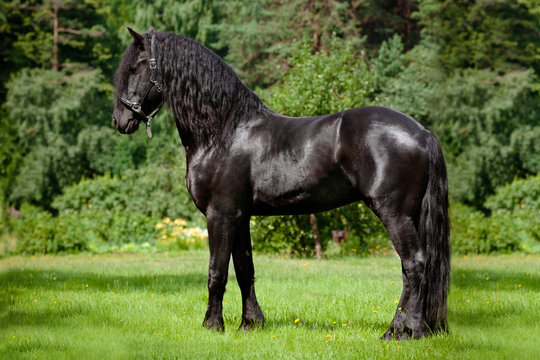
American Cream
U.S.
Only American - produced draft breed
cream colored body and Amber colored eyes
No feathering
American Cream
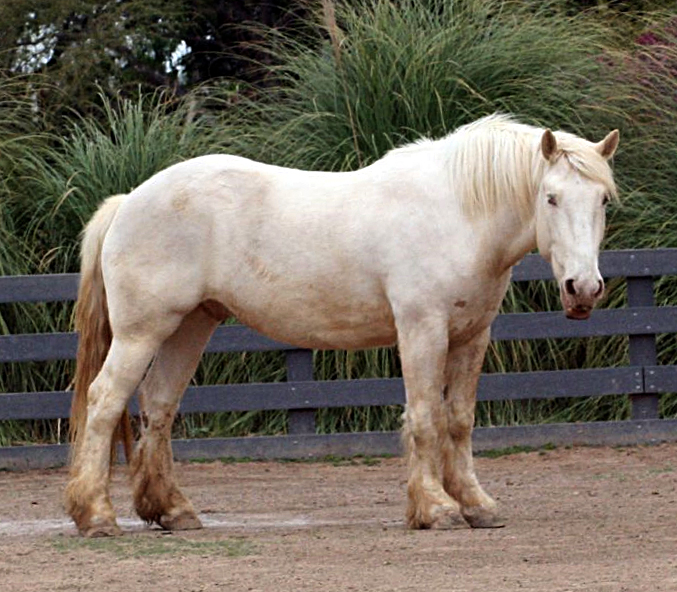
Hot blood breeds
Generally have lighter bodies; multiple uses but have great stamina. Can be sensitive and might be “herd-keepers” (meaning struggle to maintain body weight)
Arabian
Arabian Peninsula
Dished (concave face “jibbah”)
Open throat latch, level croup, high set tail
Endurance (50-100mi)
Arabian
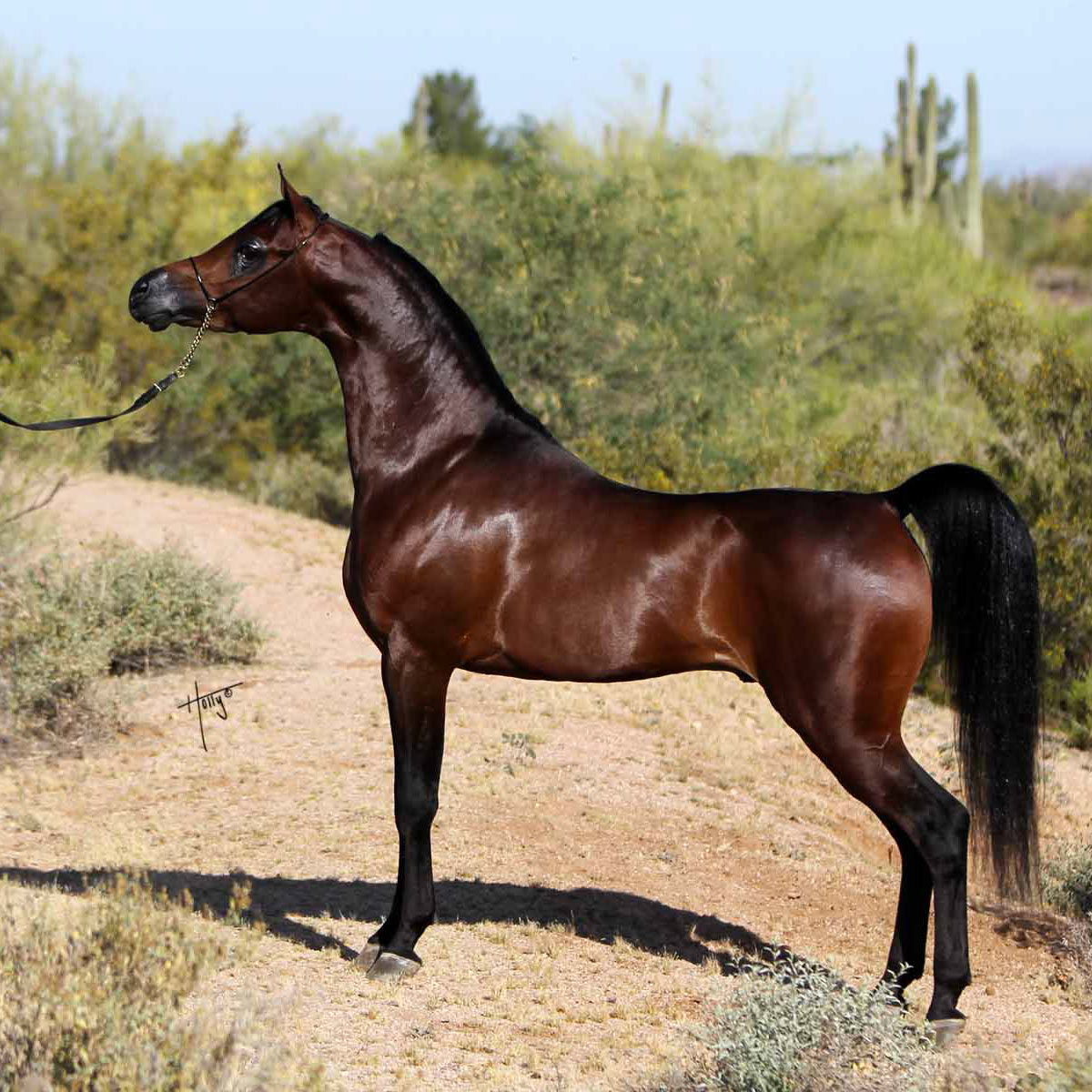
Thoroughbred
British breed
Used for flat racing (Kentucky derby) - 1.25 - 1.50 miles
Thoroughbred

Warmbloods
Consists of specific breeds, but many were started by breeding cold + hot blooded horses. Resulted in horse breeds with medium body sizes, and still heavy bones and great temperaments. Used for jumping, eventing, dressage, riding
Selle Francais
French breed
Jumping, dressage
typically bay or chestnut
Black color
Extension gene - EE/Ee/ee EE and Ee is black base
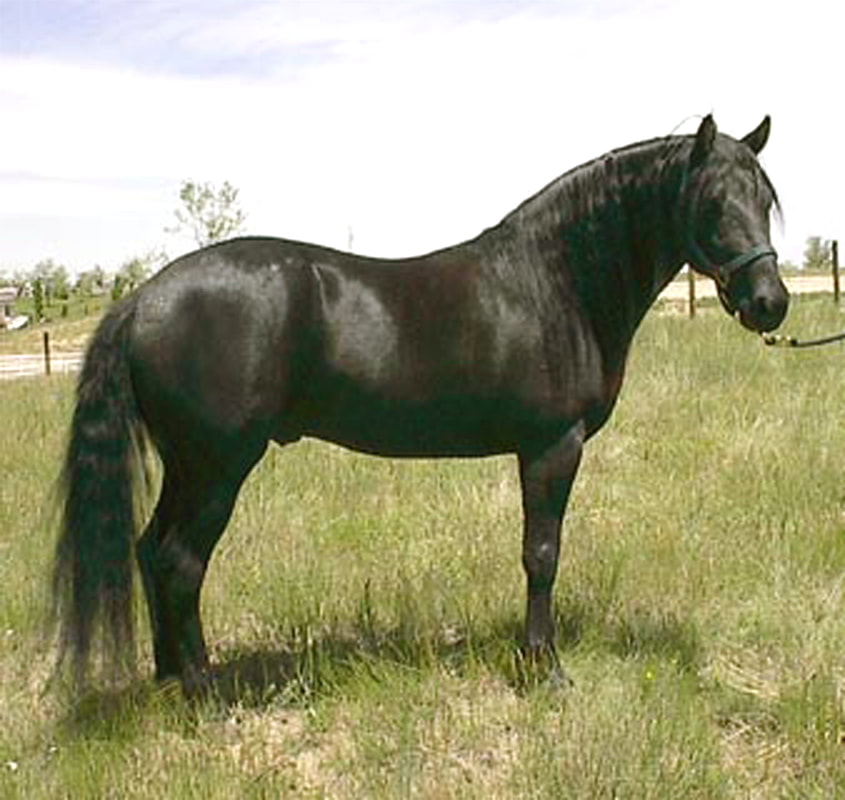
Chestnut/Sorrel
Red color
Both words mean the same thing
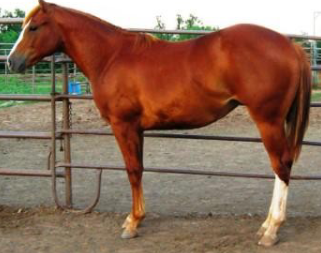
Bay Color
Agouti gene on EE/Ee = bay
Lightens/dilutes the black base color
Lighter points = Face, tail, shoulder

Grey
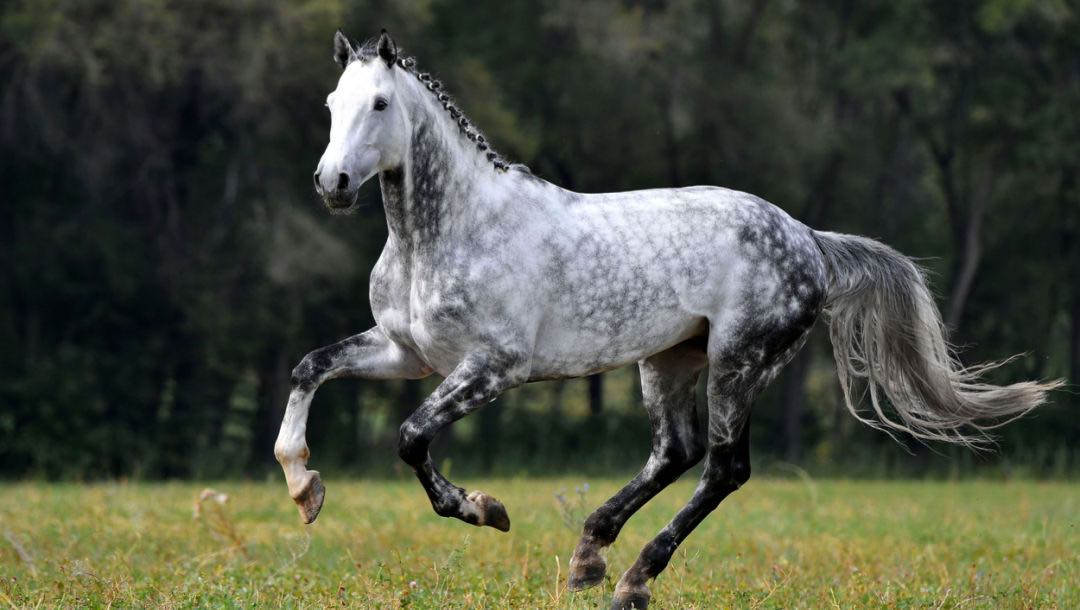
Buckskin
Cream colored body
Black mane/tail
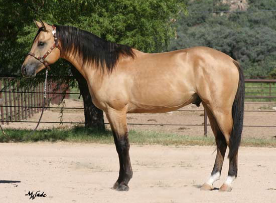
Dun
Cream colored body
Black mane/tail
DUN GENE = dorsal strip and/or zebra markings on legs
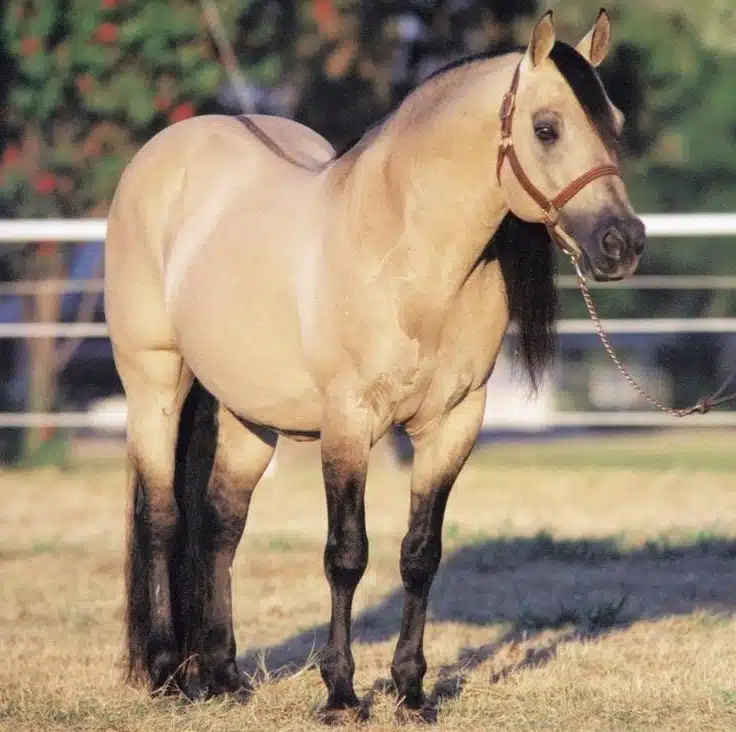
Housing concerns
1) Safety of handlers and horses
2) Ventilation
3) Ease of work
4) Comfort for horse
5) Cost of building/maintenance
To increase barn safety
NO smoking; fire extinguishers/sprinkler system/smoke alarms
Work in pairs/teams (let others know what you are doing)
Good footing
Clear aisles/no clutter
Good lighting
Proper ventilation
Lock feed rooms
Document/good records
Check fencing and animals often
To increase ventilation
A) Mechanical
Fans and AC
B) Passive
Ridge vent opening
doors/windows open
Eaves
Rumensin (brand)/monensin(product)
ionophore (facilitates ion transport across cell membranes) derived from bacteria that is commonly fed to cattle/goats/poultry to improve gain, milk production, or control coccidiosis, respectively. Capable of modifying rumens microbial environment, which helps improve feed digestion. TOXIC TO HORSES! (damages muscle cells)
Hoof Maintenance
typically trimmed about every 6-8 weeks (young grow faster than senior)
Shoed/shod
By a Farrier
this means that horses will have horseshoes on the bottom of hooves.
Can be Steel, Aluminum, Rubber, Plastic
Laminitis
inflammation of the laminae (hoof layers). It is the most prevalent non-infectious disease in horses.
Laminitis Causes and Symptoms
Causes
Hormonal disruption (endocrinopathy)
Systemic infection (ex. retained placenta)
Mechanical trauma (pounding pavement)
Symptoms
Head higher
weight shifted to hinds
unsound in their movement
warm/hot hooves
Strangles
a serious infection caused by streptococcus equi bacteria and is highly contagious. This infection is common in horses less than 3 years old.
There is a vaccine
Strangles symptoms
Fever (101.5 +)
Nasal discharge
Swollen mandibular/parotid glands
Lathargic/off feed
Trouble swallowing/breathing
Colic
its a gastrointestinal condition that is another major concern in horse and can be caused by: Grain overload (another reason to lock feed), increased internal parasite load, or Impaction(block in digestive tract)
Colic symptoms
off feed
pacing
kicking/biting/looking at belly
polling
increase HR/RR
stretching
decrease in gut sounds and manure
sweating
pawing
Colic treatment
Can be as simple as providing a pain reliever and getting them to walk around, whereas other times surgery is absolutely necessary for the horse to survive (and even then, they may not)
How much water horses will drink per day
6-10 gallons
Horses diet
forages (grasses/hay) should make up the majority of their diet, with concentrates (grains like corn) being fed to hard-working horses (athletes or lactating mares)
How much horses eat
They will consume about 1-3.5% of their body weight per day. Range depends on breed, size, physiological state of horse, and usage
Horses stomach
monogastric
small stomachs, evolved to graze constantly and slowly over about 20 hours of the day, and cannot vomit. Because of this, large amounts of feed should never be given to a horse - should be provided in 2 to 3 smaller amounts throughout the day.
How we measure horses height and why
Measure using hands: 1 hand = 4 inches
why: originally was no commonly known measuring system; so used hands
17.1 hand horse = 17 × 4 = 68 + 1 = 69 inches
Difference between a horse and a pony
Pony and horse are the same genetically
Pony = less than 14.2 hands
Horse greater than 14.2 hands
Difference between horse, donkey and mule
Horse has 64 chromosomes
Donkey has 62 chromosomes
Mule is a cross between a donkey and a horse and has 63 chromosomes
Obligate nasal breathers
Means you must breath only through nose.
Horses are this because they cannot breathe through their mouth
Przewalski’s horse
Mongolian breed of horse (aka Takhi) - not domesticated
Evolutionary advantage to not being able to vomit
If the horse eats anything of nutritional value it cannot lose it.
Horses blind spot
Directly in front of the head and directly behind the tail
Horse handlings safety
Keep the horse you are handling about 8-10 feet away from other horses
Pay attention to the horse and other handlers/students
Make sure to constantly let your horse know where you are so you don’t startle them
Move slowly and quietly around the horse
Wear closed-toed shoes and keep you feet away from the horses hooves so you don’t get stepped on
Type of knot uses when tying a rope halter
Sheet bend
Advantage of a rope halter vs. flat/nylon halter
There is more feeling(pressure) with rope halter because of the knots that a flat/nylon halter doesn’t have
2 benefits to cleaning out a horse’s hooves
Removes debris and rocks
You can inspect the legs and hooves
Grooming properly is important because it allows us to
Visually check them over for injuries, swelling, and /or skin issues
Remove dirt /debris before tacking up the horse
improve hair quality by helping to even distribute the natural oils produced over the entire coat
learn that individual horse’s behaviors and build trust between each other
Curry
Use on: areas where muscle/fat present (not face or legs)
Function: remove large pieces of mud and loosens dead hairs
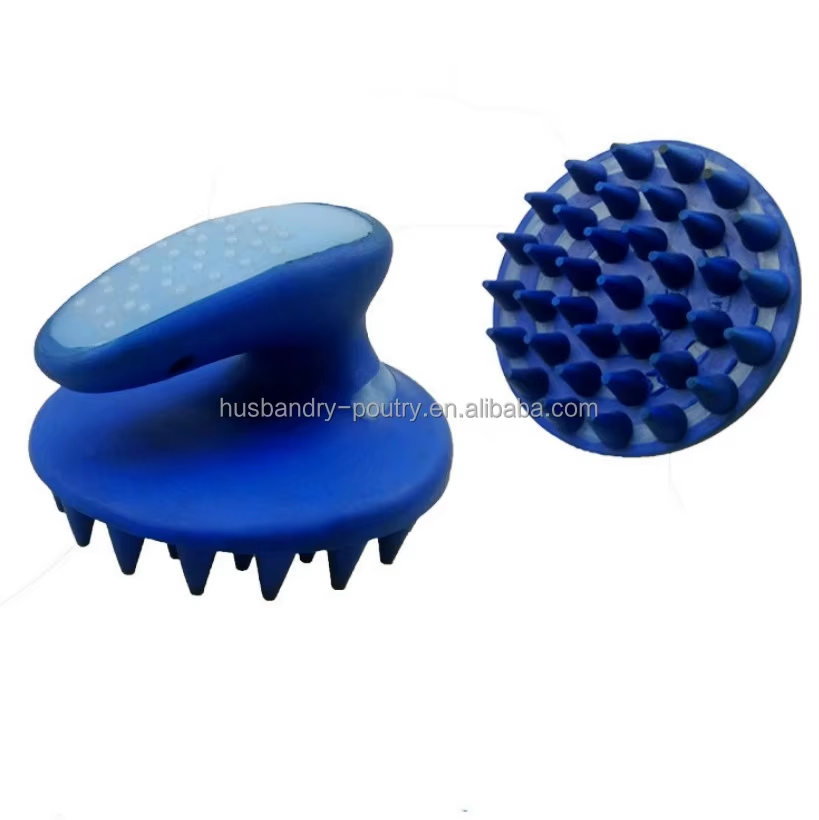
Hard brush
Use on: areas where large muscle/fat; can be gently used on legs, but not on face
Function: Removes dried mud, large debris, loose hairs

Soft brush
Use on: Anywhere on body, face, legs
Function: Removes smaller dust particles and spreads natural oil over coat (increases shine)

Mane and tail brush/comb
Use on: Forelock, mane, and tail
Function: Removes tangles

Hoof pick
Use on: Bottom of hoof
Function: Removes mud/manure/stones from sensitive underside of hood
Dominant horse behavior
Pin their ears, raise their head, flare their nostrils, brace through the neck, swish their tail aggressively, or move quickly and aggressively toward another horse to maintain dominance
Submissive Horse behavior
might lower head, look away, or move away from a dominant horse
Major Nutrients
1) Water
2) Carbohydrates
3) Lipids
4) Proteins
5) Vitamins
6) Minerals
Ration
what is consumed in a 24-hour period
Why we want animals to mainly consume forages
1) Evolutionarily, our livestock species developed consuming predominantly forages
2) Forages are generally cheaper per pound when compared to concentrates
Influences how we graze our animals
1) Land availability - own vs. renting, rent year-round? acres available
2) Stocking rate - Goats, cattle, horses? Rotational grazing vs. continuous grazing
3) Grass species available - Cool season(KY bluegrass, ryegrass) vs. Warm season (Bermuda, zoysia)
4) Aesthetics - Do you care what the turnout space looks like
Don’t overstock
Goats = 3-6 does/acre
Cow/calf = 1/acre
Horse - 1/acre
Ideally want to move animals when grasses are about 3-4 inches tall
Rotational graze + sacrifice areas
Moving animals from one pasture to another prior to major damage to plants
Wet + winter months = sacrifice area (your allowing damage to this area but its to help the other areas)
Mowing and harrowing
Mowing = evens out grass height, which promotes more even grass growth during recovery period. Helps encourage more leaves and lowers stems (hardy and more palatable)
Harrowing (aka dragging) = breaking up manure - helps evenly distributes nutrients and helps control parasites
Fertilize properly
Plants require nutrients to grow; fertilizer can provide that, but should test. Lime may be needed
Careful when apply; rainy weather can cause run-off and kill sensitive fish/wildlife
Identify weeds
Often, livestock won’t graze and can be poisonous
Control via:
Grazing management
Mechanical control (mowing)
Chemical control (herbicides)
What happens is we overgraze pasture spaces
1) Plants decrease in nutritional value
2) Takes plants longer to recover
3) Animals often have increased internal parasite load (they are eating in spaces where they poop (ROUGHS))
Hay
Can be made out of multiple grass species
Grasses cut + dried (about 12 - 18% moisture)
< 12% = too dry and breaks apart; dusty
> 20% = rick of mold, possible fire
Determine the type of concentrate you need to provide
Species/genetics (cattle vs. sheep)
Age/stage of life (dry vs. milking; growing vs. finishing; athlete vs. pasture ornament)
Season/weather
Housing conditions
Stress
Remember, can adjust/modify as needed; do so slowly
Rules for feeding livestock
1) Don’t mix feed for different species (or scoops)
2) Access to clean water ad libitum(any time)
3) Feeding about same time of day
4) Keep good records + monitor health (BCS)
5) Don’t overfeed ( health concerns + waste of money)
6) Keep feed properly stored
Molasses
Increases palatability
decreases dustiness
Hay feed
Greenish color
made of dried grasses and/or legumes
store are 12-18% moisture
USE: fed to livestock as major forage; can be fed to livestock, horses, and some companion animals like rabbits and guinea pigs
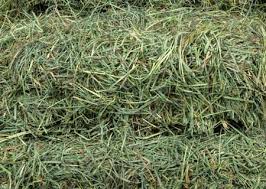
Straw feed
Yellow/golden color
Made of dried cereal crop (wheat, rice, oats, barley) stalks
USE: Animal bedding, Compost, Erosion control on property, Mixed into total mixed ration (TMR) to increase fiber); note that straw contains very little nutritional value

Legumes
Made up of rounder leaves and more prominent stems.
They are able to use ammonium to build proteins and thus have higher protein than grass hays
EXAMPLE: Alfalfa, Clover
Advantages to alfalfa hay
It is higher in protein
Has greater palatability
More Vitamin A
Advantages to Grass Hays
They are cheaper
Have less calories
Difference between alfalfa hay and grass hays
Alfalfa has leaves in it and grass hays don’t
Grass Hays contain more structural matter in their long slender leaves
Advantages to processing grain
1) Grains like corn, oats, and barley have a fibrous hull (or seed coat) on the outside that cannot be degraded by digestive enzymes/microorganism. By processing it, we can increase the energy available by 5-10%.
2) It decreases particle size, therefore, increases surface area that is available for enzymes and microorganisms to interact with
3) If using thermal processing, the heat can destroy pathogenic microorganisms and mycotoxins (from mold)
Disadvantages to processing grain
1) It takes time and energy to complete (therefore, increases cot of the product)
2) If grains are powdered too finely, it can increase the amount lost/wasted by the animal dropping it. This is often times why we pellet finely ground products
Cold processing methods
1) Cracking
2) Grinding
Hot (heated) processing methods
1) Steam rolling
2) Pelleting
Relaxin
A protein hormone produced by the ovaries and placenta
Causes relaxation of soft tissues within the hindquarters of females as the get very close to giving birth.